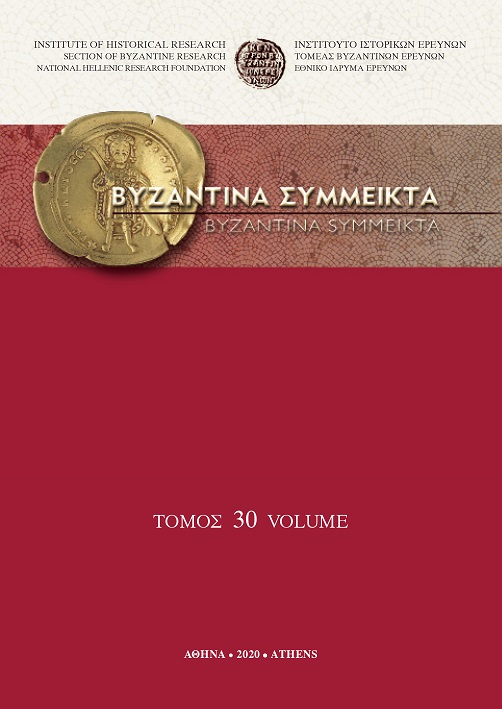Νησιά και κεντρική εξουσία κατά τα έτη 1081-1204. Μία παραδοσιακή σχέση σε κρίση;

Περίληψη
During the twelfth century (1081-1204) the Byzantine Empire faced a series of separatist movements, such as those of Theodore Mangaphas in Asia Minor and of Leo Sgouros in southern Greece. The byzantine islands were no exception to the rule, as Crete, Cyprus, Negroponte and Rhodes seem to have pursued their independence from the central government. The aim of this article is to ascertain which of those revolts actually took place, and then to shed light on their character. Researchers have not drawn a definite conclusion concerning the incentives behind the secessionist movements. Some support that the isles were oppressed by the burdens the government imposed, especially taxation, while others have argued that the islands did not manifest any tangible intention to secede. This paper favours the latter view, claiming that ambitious local magnates sought to take advantage of political instability in order to subdue the islands to their personal authority. However, an effort has been made not to overlook the cases where popular discontent fuelled the reaction against imperial authority.
Λεπτομέρειες άρθρου
- Πώς να δημιουργήσετε Αναφορές
-
ΚΩΣΤΟΥΡΑΚΗΣ Ν. Λ. (2020). Νησιά και κεντρική εξουσία κατά τα έτη 1081-1204. Μία παραδοσιακή σχέση σε κρίση;. Βυζαντινά Σύμμεικτα, 30, 57–84. https://doi.org/10.12681/byzsym.20533
- Τεύχος
- ΒΥΖΑΝΤΙΝΑ ΣΥΜΜΕΙΚΤΑ 30
- Ενότητα
- Άρθρα

Αυτή η εργασία είναι αδειοδοτημένη υπό το CC Αναφορά Δημιουργού – Μη Εμπορική Χρήση – Παρόμοια Διανομή 4.0.
Οι συγγραφείς των άρθρων που δημοσιεύονται στα ΒΥΖΑΝΤΙΝΑ ΣΥΜΜΕΙΚΤΑ διατηρούν τα δικαιώματα πνευματικής ιδιοκτησίας επί των άρθρων τους, δίνοντας στο περιοδικό το δικαίωμα της πρώτης δημοσίευσης. Άρθρα που δημοσιεύονται στα ΒΥΖΑΝΤΙΝΑ ΣΥΜΜΕΙΚΤΑ μπορούν να χρησιμοποιούνται ελεύθερα, χωρίς δικαίωμα τροποποίησης (δημιουργία παράγωγου έργου) με αναφορά στο συγγραφέα και στην πρώτη δημοσίευση για μη κερδοσκοπικούς σκοπούς(άδεια Creative Commons 4.0). To Εθνικό Ίδρυμα Ερευνών διατηρεί το δικαίωμα να δημοσιεύει, να αναπαραγάγει, να παρουσιάζει στο κοινό, να διανέμει και χρησιμοποιεί άρθρα που δημοσιεύονται στα ΒΥΖΑΝΤΙΝΑ ΣΥΜΜΕΙΚΤΑ σε οποιοδήποτε μέσο και μορφή είτε μεμονωμένα είτε ως μέρη συλλογικών έργων, για όλο το χρόνο διάρκειας προστασίας της πνευματικής ιδιοκτησίας και για όλες τις χώρες του κόσμου. Αυτό περιλαμβάνει ενδεικτικά και όχι αποκλειστικά, το δικαίωμα δημοσίευσης των άρθρων σε τεύχη του περιοδικού ΒΥΖΑΝΤΙΝΑ ΣΥΜΜΕΙΚΤΑ, αναπαραγωγής και διανομής μεμονωμένων αντιγράφων των άρθρων, αναπαραγωγής ολόκληρων των άρθρων σε άλλη έκδοση του ΕΙΕ, και αναπαραγωγής και διανομής των άρθρων ή περίληψης αυτών με χρήση πληροφορικού συστήματος αποθετηρίου.


